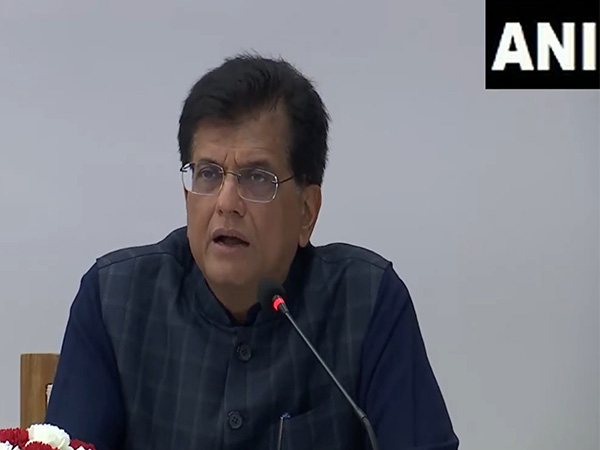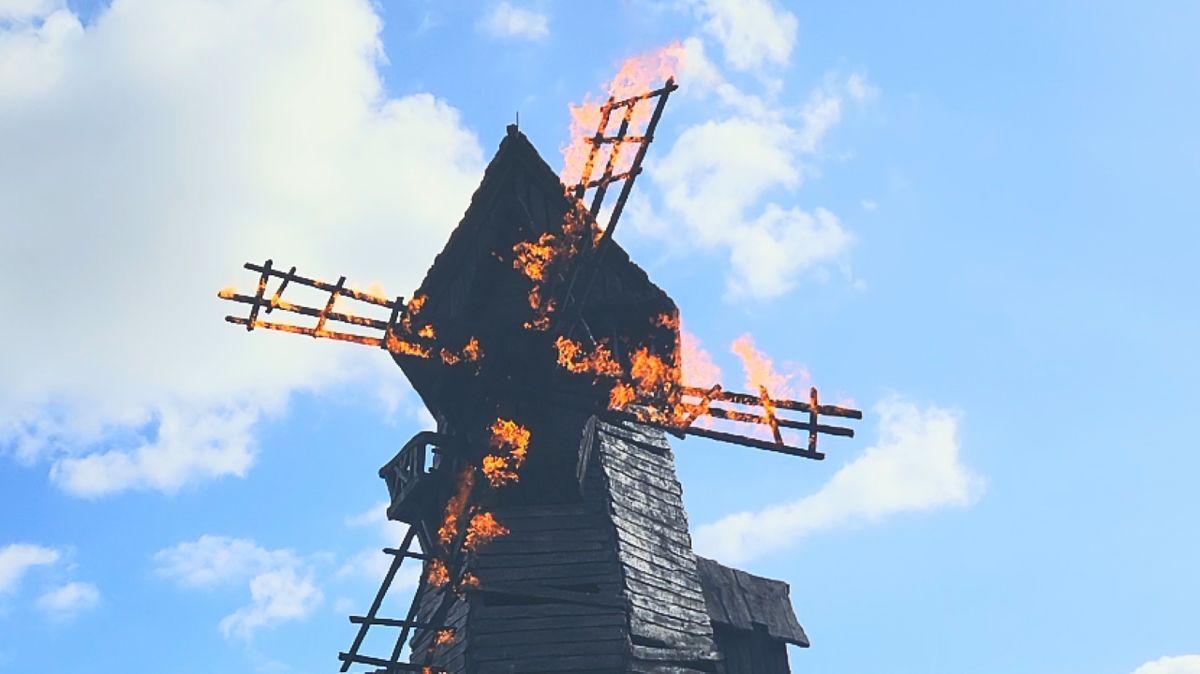Everybody’s favorite new hospital drama has received tons of praise within the medical community for its accuracy, authenticity, and attention to detail. This is a show that knows its ECMO from its LUCAS. To the rest of us, the jargon sure sounds convincing, but we’re also left wondering, “Is ‘degloving’ really what that’s called?” Or, “Holy shit, do they really use a drill to get blood and fluids directly into our bones?” (Yes, they do.
) The show’s treatment of a mass-casualty incident — in this case, a shooting at a music festival — over three episodes was especially deft , and highlighted, perhaps more than any of its other storylines, the sustained level of competence and calm that everyone in an emergency department has to bring to every moment of their job, every day. It was these dramatic episodes that prompted us to reach out to an emergency doctor who’s lived through a similar horrific incident, to find out how truthfully The Pitt captured the experience. Dr.

Lois K. Lee, who is a senior associate in pediatrics in the department of emergency medicine at Boston Children’s Hospital, was working the afternoon of April 15, 2013, when two homemade bombs were detonated at the finish line of the Boston Marathon. She took the call that broke the news of the incident to her hospital, and set their mass casualty protocols into motion.
Let’s start with just your first impressions in terms of how realistic the show’s depiction of the mass casualty incident, and how it unfolds at the hospital over two to three episodes, was. They did a nice job as far as how the information trickled in and then how the patients flowed in. It showed that they had had some practice in the disaster preparedness, in being able to set up the teams, figuring out where the current patients in the emergency department go as they are expecting an unknown influx of patients, and then how they do emergency triage, which is not the typical triage at all, but definitely how we prepare for disasters as we also have practiced drills in our emergency department.
Editor’s picks The 100 Best TV Episodes of All Time The 250 Greatest Albums of the 21st Century So Far The 500 Greatest Albums of All Time The 200 Greatest Singers of All Time Are the protocols generally the same across American hospitals for an incident like this, or does it depend on the type of hospital, the size of the hospital? The general principles, yes, are the same. You need to clear out the people who are there, either if they’re already slated to be hospitalized or too sick to be discharged. Then anybody else who is there less urgently could be moved off site or people will just elect to leave.
Then you have this whole other emergency triage, which basically is, are they nearly dead or actually dead? Do they need immediate resuscitation or surgery? And then, are they less acute — needing some attention, but can wait. And then you have the final category of the worried well or the walking well, the people who come in but may not actually have any serious injuries. There are a lot of protocols that Dr.
Robby, Noah Wyle’s character, the attending physician, is repeatedly describing early in Episode 12, announcing how things are going to go and why. When he starts working triage with his colleague outside, he’s rehearsing with him, quizzing him almost: “All right, if they come in and they have X, Y, and Z, where do they go?” Is that a conversation that is likely to take place or is that exposition for the benefit of the audience? It’s both, because that trainee probably hadn’t been through a disaster situation unless they had been through a drill or had read about it. So, as the attending physician, also, if you haven’t worked with somebody in that specific scenario, you want to be sure that they know what they’re doing and then you know that you can trust them, especially as you see Dr.
Robby has to be 10 different places at once. That’s important to know as the attending physician when you have many other people that you’re supervising and basically running the whole disaster scenario. One of the gambits of this show, being set in a teaching hospital, is that you have medical professionals at all different levels of experience, and you’re watching these young residents who, it’s day one for them.
Would those people realistically be involved in procedures like this, or would it be like, “All right, you guys sit this one out”? Overall, the folks who are there primarily will have definite assigned roles and then other trainees, especially the residents, will be expected to fill in on some level. There is clearly going to be less supervision than you would ideally hope. The degree of freedom that some of the, as we say, trainees, that includes the medical students and the residents, have may vary based on different hospitals.
[On the show], they don’t have as many supervising physicians. So, there is less opportunity for the trainees to be supervised. Where I am, a very highly academic area in Boston, there probably would be less freedom of the trainees.
They would be assigned some things to do, but they would have less license to do some of the things that we see on the show. Related Content In Praise of ‘The Pitt’ Episode 12 and People Who Know What They’re Doing 'The Pitt' Isn't 'ER.' But It Could Be Nearly as Good 'Good Burger' Actor Kel Mitchell Recovering at Home After 'Frightening' Health Scare Jason Aldean Alludes to Boston Marathon Bombing While Defending 'Try That in a Small Town' I’m assuming that nobody really has the time or mental bandwidth to consider issues of liability when working an event like this.
But in the show we see cases where some of the trainees were doing things without the supervision of an attending because none were free and someone had said to them, “Just go ahead and do what you have to do.” And they’re making decisions that they might not really be experienced or qualified enough to make. Does the effort to save someone’s life, however you can think of doing it, supersede any concern about the chain of command or trying something experimental? I mean, there’s a scene where one of the trainees drills into someone’s head to relieve cranial pressure, which everyone even within the world of the show seems to think is insane.
I can’t speak for all hospitals and all places, but I could say, in general, there would be concern that without proper supervision there would still be liability, regardless of the overall situation. One could argue, well, this is a disaster situation and these people are critically ill. However, there is still this supervision that is expected to happen.
Whether or not you would be able to argue in a situation that the same rules don’t apply, I don’t actually know if that would hold up. I’m guessing doctors are going to have normies who watch this show now asking them questions in the emergency room about “bougies” and “IO drills.” Which I’m sure will be fun for you.
Though I do have to say, the idea of just casually drilling holes into people is so crazy to me. That’s a thing? Yes. If you are in a situation where you cannot get an IV — you have two attempts at an IV, and then if you can’t, then you put in an IO.
That is something that a trainee should be able to do under supervision or an advanced senior resident would be able to do on their own. Another overriding concern of the show is driving home the understaffing and other macroeconomic problems that affect hospitals today. In these mass casualty episodes, one of the supervising physicians is a military veteran, and he shows up with his own go bag with various equipment in it that is not hospital-issued.
Is that allowed, for anyone to bring what they have to the table because this is an extreme situation? Well, one of the things he used to basically make a hole in the trachea for someone they couldn’t have breathing through their mouth is actually an approved device. Just as Dr. Robby said, they don’t have the money and the space, so they don’t actually have it.
So, again, I can’t speak for every hospital, but I think in that scenario, it probably would be acceptable. In this life-threatening situation, you have an approved device and a person who is trained to use it, even though the hospital doesn’t stock it. In your professional experience, have you encountered the fiscal and resourcing issues that are touched on in this show? I think all hospitals on some level have experienced nursing shortages after the pandemic.
I’m thankfully in a more well-resourced hospital. But that being said, we definitely have the same resource shortages of space. We have patients in hallway beds.
We have now actually outsourced two clinic spaces to be able to use those as emergency department rooms because we don’t have enough rooms in the main emergency department. So, all those resource issues I think are things that hospitals throughout the country are feeling, the hallway beds, the lack of personnel, especially nurses. How much training is there for mass casualty incidents and more extreme situations like the one depicted in the show? I’m not sure broadly throughout the country, but certainly in the larger cities and the larger hospitals, they will do drills at the institutional level.
So, at our hospital, we literally will have mannequins that have a quick scenario and then somebody is the triage doctor and has to triage them red, yellow, and green, and then we send them to certain parts of the emergency department. We do these live drills with mannequins in our department once a year. Then I know, in the city of Boston, they also do coordinated tabletop drills.
That’s part of the reason we think that during the Boston Marathon only three lives were lost, because there was such a quick response. Also, there was a medical tent. There were a lot of medical professionals there at the finish line, and there was already a coordinated plan to get patients to hospitals for those who needed surgery.
I would imagine that if you are a doctor who has a lot of experience treating gunshot wounds, and it’s a mass casualty event that is a result of a shooting, maybe you’re a little bit better prepared. But for you, in the case of the Boston Marathon, it was largely shrapnel injuries below the waist, is that right? Yeah, so definitely shrapnel and a lot of bleeding from legs. So, trying to put tourniquets on.
And again, there were a lot of medical professionals, or at least those who were trained to be there at the marathon, and laypersons, too, who just knew what to do, who placed tourniquets on immediately. Then again, you can’t have a tourniquet on indefinitely, because then you lose the blood flow to the leg. But then if you can get the people to medical care and then get them— ultimately what they need to do is go to the operating room.
So, the emergency department is just a quick triage stop to say, “Yes, this person needs to go to the operating room and this person needs to go right now,” and having those resources available. The Boston Marathon [bombing] happened to be at change of shift at our hospital, and it was around that time, I think, for a lot of other hospitals. So, you actually had probably more staff than usual, because you had some overlapping doctors and nurses both in the emergency department but also in the operating rooms to be able to manage all the patients.
Do you remember how you all found what had happened? Because the way it’s depicted in the show, it’s just individuals on their phones and they’re hearing things and word is spreading. Was it like that? No, actually, we have communication line throughout basically all the Boston-area teaching hospitals, but this [news] couldn’t go over that, because that’s over airwaves. But we have an old-fashioned phone on the wall.
So, I was actually the first one to pick up the phone at our hospital, because I was the head of the emergency department on that day. I remember turning to a colleague and saying, “A bomb just went off at the finish line at the Boston Marathon.” Of course, I didn’t even really conceive of what that meant, but then they start asking, “Well, how many patients can you take of this acuity?” We have a lot of hospitals in a small square-mile space here in Boston, but we’re the children’s hospital.
So, we would accept any child and also parents if necessary. But you do know that there’s a coordinated response. So, I got the phone call.
People had started seeing some things on Twitter, but then all the cell phone lines went down. So, that’s why we have to have a landline, because after that, people weren’t able to access any information. So, I remember trying to get on the computer to see what was going on in the news, but at that point, nobody really knew.
All the hospitals were just trying to do whatever we could. So, anybody who was non-urgent got immediately discharged. Anybody who had to be hospitalized had to go upstairs.
But this was, at least in my memory, the first time we had a real mass casualty event. We did not have lots of patients like the adult hospitals did, thankfully. There weren’t that many children who were right there [at the finish line].
But we certainly did have to go through the protocols, and it was essential that we had practiced it and knew what to do. Then based on our experiences that day, we’ve been able to continue to refine it, not just at our hospital, but [throughout] the city as well. Yeah, I was curious whether there were things that you saw in the show that are protocols that were more recently developed, because of incidents like the Boston Marathon bombing or the shooting in Las Vegas or what have you.
Well, one of the things I noticed [in the show] is they had these pre-made bins that had a lot of the equipment that they just brought down [to the ED]. They had the bins, they were all prepared, and they were all labeled. So, I did ask our disaster preparedness expert at our hospital, I said, “I don’t remember seeing those bins.
” She said that we have talked about doing that, but we haven’t done that yet. But that just goes to show the level of detail that the television producers and writers went to, to find out about that. Now, you could imagine there’s a lot of time and it takes to upkeep those materials.
They’ll expire, so somebody has to check them and restock them. So, there definitely is some resource utilization, but that was a really, I thought, interesting detail that they had. Do you remember what your gut response was when you answered the phone that day? Did you have a split second of fear, anxiety, or do you just go immediately into what you need to do? I really just didn’t even know what to expect.
So, I think there probably was a brief second of Oh, my goodness . But then it was more like, we could see some really devastating injuries and we have no idea how many children we’re going to see. So, just trying to prepare.
Again, luckily, for us, it was right at change of shift, so I was finishing up for the day. So, I basically took care of the patients that had been there, because I knew them. Then the evening shift doctors took over the front and took in the new patients and did the triage.
Is it adrenaline that pushes you through an experience like that? Training? A combination? Is it a little bit the personality type of a person that is drawn to do emergency medicine? In these episodes of the show, I was struck by how the action was a weird combination of frantic and intense, but actually very calm and focused. There’s not a lot of yelling. It’s not chaotic.
So, having been in that to some degree, can you describe what kicks in when you’re in that spot? Part of it’s the personality, and then also part of it’s the training. You know what to do and you know how critical it is to do it correctly. Then, thankfully, we’re not dealing with disasters most days, but we are dealing with sick patients on many days.
Especially in the adult hospitals, they have much higher levels of acuity. So, it’s just something that they’re used to, dealing with really sick patients and then systematically thinking, “OK, this is what we have to do to get through this and get to the next step that we need for this patient.” Then you just keep moving on.
You don’t really have time to get frantic, because that is not going to serve the patient or serve your staff, especially if you’re the attending physician. But at the same time, you’re human, which is I think what we see at the very end of Episode 13, when [Robby is] not able to save Leah, because she had a fatal wound, and then he’s got the flashbacks of not being able to save his colleague and friend. Yes.
And Robby is really dealing with that alone, and not fully facing it. For yourself and the community of doctors that you work with, do people bump up against that emotional stuff and share those experiences with one another? For me, it’s been very important to be able to talk to not only my colleagues, but in the hospital, we have something called the Office of Clinician Support. So, if you need actual professional help, those people are there for you as well.
That being said, we know that emergency medicine has a very high burnout rate, because it can be a very stressful environment. Very fulfilling, but also at times high liability. So, you put all that together and that can lead to burnout, especially if you are in these stressful situations and don’t have a way to process it.
But everybody processes things differently. So, for me, it helps to be able to talk about it with my colleagues, but that may not be the way that everybody processes stress. Robby treating his stepson’s girlfriend made me think about the fact that doctors and nurses in hospitals are a part of the community that they’re serving.
So, there is a chance that someone you know could come in and you’re working on them. And I was intrigued by the tension between Noah Wyle’s character doing everything he could to save Leah, but also the other doctors being like, “You can’t be using four bags of blood on this girl when we have all these people coming in.” Have you ever witnessed or experienced anything like that, where it becomes a little personal? I have not directly, but I think we can all understand how your humanness might be able to overtake your cognitive thought process, yeah.
I want to go back to the idea of personality types who are drawn to emergency medicine in particular. As much as the creators and writers of The Pitt are just drawing characters that they think are going to be interesting, they also consult with a lot of doctors and medical professionals in the making of the show. There’s one type that is a bit of a cliché that we see in a lot of medical shows, and that is surgeons being.
.. I don’t know— Not polite? [ Laughter.
] Yes. Very brusque and arrogant, ice in their veins. Anything that isn’t someone bleeding out is boring to them, that kind of thing.
Is that based in any reality in your experience? I think stereotypes come from somewhere. Again, maybe I’m very lucky — at our hospital, we have a high level of professionalism and we work well with all our subspecialists. One thing is, some of the language and communication between the different types of physicians [on the show] wouldn’t be tolerated in our setting.
That is certainly not what I experience every day. Is there a specific incident from the show that you’re thinking of when you’re saying that? Well, I’m just thinking of the intern Santos, and how she calls one of the medical students “Crash” and she calls the other one “Huckleberry.” Sometimes, of course, as a supervising doctor, maybe you don’t hear that, but I don’t know.
There does seem to be quite a lot of animosity between different characters. Maybe I just feel like hopefully that’s not typical. What would you say is a quality that you have to have to be drawn into emergency medicine, to not get squeamish, not break down emotionally? For emergency medicine, we’re there to make decisions, help people quickly.
You have to be able to get along with anybody. You have no relationship with these people, short-term or long-term. So, you do have to be able to talk to everybody, patient-wise, but also your medical team.
You have to be willing to like people of all different types, because they’re not always going to be pleasant, both patients as well as your colleagues sometimes. So, you have to have a thick skin, I think, to do emergency medicine. You have to be able to think quickly.
And you have to be able to just take the joy. You’re not going to save everybody, but you do the best you can and help as many people as you can. Is there a character on this show that speaks to you in some way? It’s not because I’m like her, but I like McKay.
She’s got an interesting story, but she’s also incredibly compassionate both to the trainees — she’s an excellent teacher — and also to the patients. She can read people, like the mother who comes in with a burned hand. So, she’s a character I want to get to know more, who I am drawn to and I respect her character.
You started watching this show specifically to have this conversation with us. Do you think it’s good? What’s your takeaway? I’m enjoying it. They are putting a lot of action into one hour, but not a lot of people [in other jobs] really do a 12-hour a day like this, where you’re just constantly running.
As a matter of fact, there’s one time where Dr. Robby’s trying to go to the bathroom, somebody interrupts him, and he can’t even do that, so [it shows how] there is no time for breaks. One thing that they don’t show is all the time you normally spend at the computer ordering things and charting things.
That part is not interesting to watch on TV, I get it, but that is a reality for the rest of us in the real world. And it’s really good to see how medical shows have evolved over time. I first started watching ER when I was in medical school, and then Grey’s Anatomy , and this one.
I liked this perspective of one hour at a time and showing the breadth of humanity we see in the emergency department, and what we’re trying to do in helping people not just medically but with social needs, and dealing with both some lighthearted things, and some really, really serious things, multiple times a day, multiple days of the year. I also think the nurses are amazing on the show, and I’m really glad that they’re highlighting the amazing work and just how smart and experienced that these nurses are, that it’s really a team effort all the time. Is there anything you’ve seen in it that you think is totally ridiculous? The one thing that really doesn’t look appropriate is how they do the CPR.
But, [TV has] evolved, because they used to shock people that had a flatline and that’s not what you do. I remember seeing that on ER , that was very disturbing, but [on this show], they didn’t. They’re like, “No, no, you don’t shock somebody if it’s an asystole.
” I’m like, “OK.” So we’ve definitely evolved, but the CPR is still not quite right. As somebody who teaches CPR, I’m like, “Oh, no, that’s not how we do it.
” Trending Stories Trump Admin Dismisses Judge’s Order to Bring Back Man Accidentally Sent to El Salvador Trump Shares Video About How He Is ‘Purposely Crashing the Stock Market’ Kurt Russell Remembers Val Kilmer's Unshakeable Humor and Their Final Farewell Eminem Is a Grandpa! Rapper's Daughter Hailie Honors Him With Baby Name What are they doing wrong? Not doing it hard enough or something? Yeah. I mean, you have to be literally on top [of the person you’re working on]. You have to have straight arms.
Huckleberry, I can’t remember his name, is not that tall. So, he should be up on a stool, especially because the gentleman had a broad chest and that, you literally can only do it for two minutes. Because if you’re doing it correctly, you have to push down hard, and you are the heartbeat for the patient.
So, if you are not pushing down hard, you are not pumping blood to the body. That’s why you have to switch out at two minutes. So, that sequence, there’s some room for improvement, but overall, as an emergency medicine physician, I have to say I am enjoying it and I appreciate the issues that they’re bringing are not all medical.
I think that’s important for people to see..
Entertainment

This ER Doctor Says the Mass Casualty Protocols on ‘The Pitt’ Are Spot-On. The CPR, Not So Much

Dr. Lois K. Lee of Boston Children’s Hospital, who was head of the emergency department the day of the Boston Marathon bombing, weighs in on the dramatic PittFest episodes















